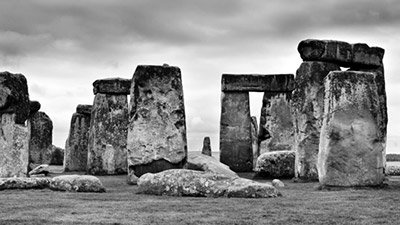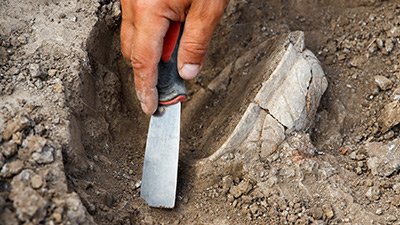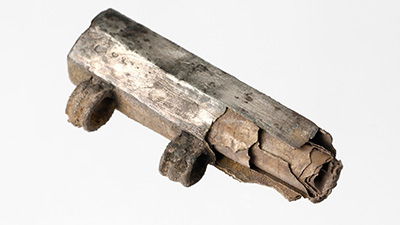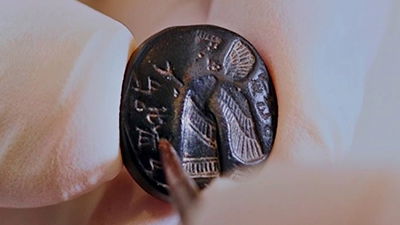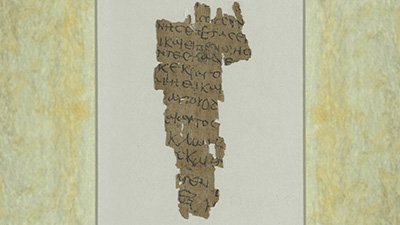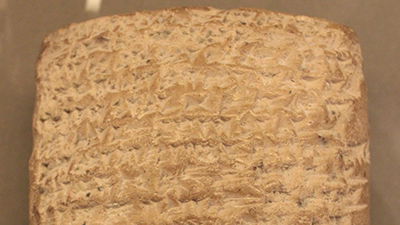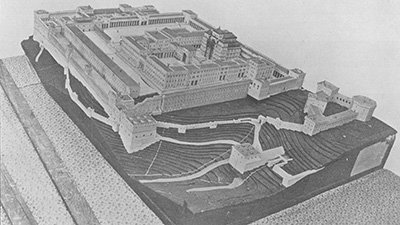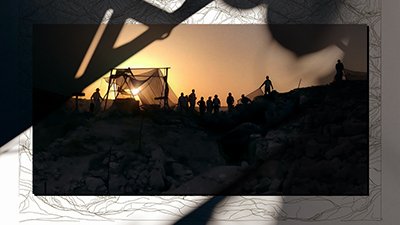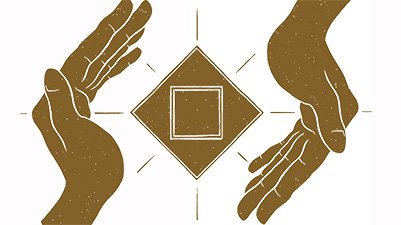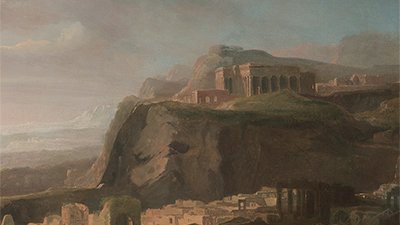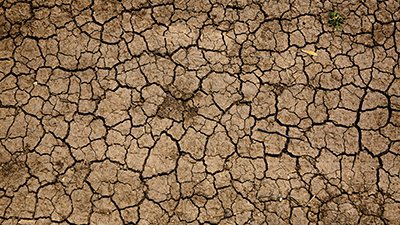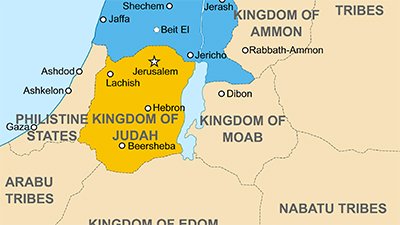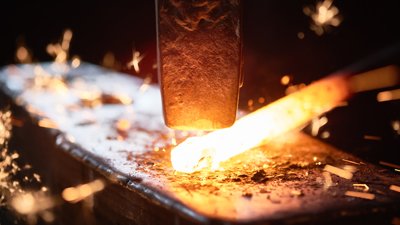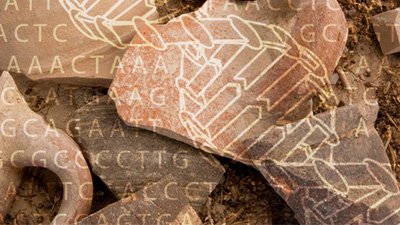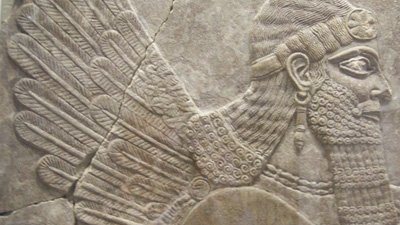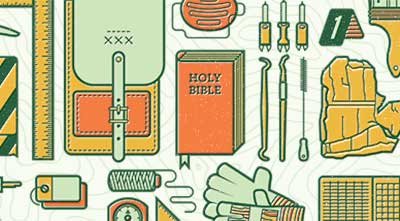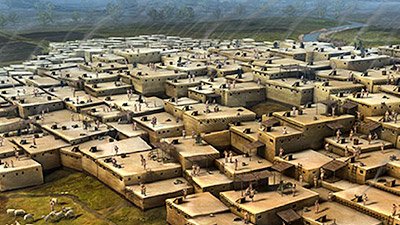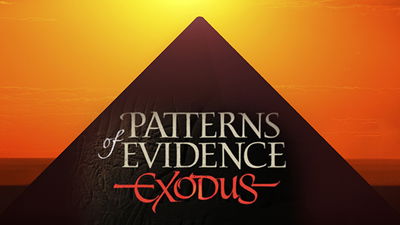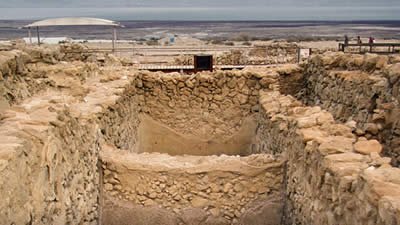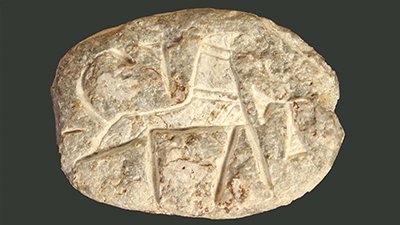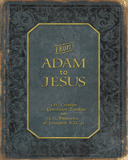Archaeology
Dead Sea Scrolls
Can ancient light be shed on modern issues of interpretation? The Qumran scrolls contain the most ancient surviving interpretations of the Genesis Flood. Several first-century BC manuscripts talk about the Flood and confirm our current understanding of a global, catastrophic flood in Noah’s day. The Qumran scrolls confirm that we can trust God’s Word.
Archaeology and the Bible
Archaeologists once boasted that the Bible was full of errors because no independent, historic evidence had been found to confirm the Bible’s claims. But a slew of astounding discoveries has put a damper on their boasting. - Archaeology provides us with fascinating and amazing affirmations of Scripture’s accuracy and trustworthiness.
Intelligence of Ancient Man
From an evolutionary perspective, most people today believe that ancient man originally communicated with grunts, and then over time went from making “primitive” items (e.g., stone tools) to working with bronze and iron. However, the evidence confirms humans have been highly intelligent from the beginning and could quickly gain knowledge to create sophisticated technology.
What About the Dates of Ancient Egypt?
The Bible’s history gives far fewer years before Abraham than the ancient histories of other cultures, such as the king lists of the Sumerians and the Egyptians. However, it seems that priests and writers of these other histories purposely stretched their dates and histories, perhaps to show that their own culture was superior to all others.
Archaeology Topics
-
Ancient Egypt
People often appeal to Egyptian chronologies as proof that man predates the biblical 6,000 years. But Egyptology, when properly understood, confirms the Bible!
-
Ancient Technology
Ancient man, far from being the commonly perceived illiterate brute, was a genius. Some of his ancient technologies still confound historians today.
News About Archaeology
-
March 31, 2025 from Ken Ham Blog
Archaeology confirms the Bible (and has done so over and over again through the years)—including with a new set of excavations under the Church of the Holy Sepulchre in Jerusalem.
-
Dec. 30, 2024 from Ken Ham Blog
Several years ago, a silver amulet was discovered buried in a grave in what is now Frankfurt, Germany. Scientists are finally able to read the fragile silver foil inside it.
-
Sept. 9, 2024 from Ken Ham Blog
Yet another find confirms exactly what we’d expect starting with God’s Word: a beautifully carved black stone seal believed to be about 2,700 years old.
-
June 24, 2024 from Ken Ham Blog
According to reports, a recent manuscript found details Jesus performing miracles as a child. How should Christians think about this find?
Articles About Archaeology
-
April 1, 2024 from Answers Magazine
How did the discovery of an ancient curse tablet confirm the biblical timeline?
-
Jan. 28, 2024 from Answers Magazine
Everyone loves to hear stories about lost civilizations like the island of Atlantis, which sank under the ocean.
-
July 11, 2023 from Answers in Depth
When we examine claims that the consensus is wrong, we must weigh the claims against what Scripture says.
-
July 1, 2023 from Answers Magazine
While excavating the Old Testament city of Shiloh, a team of archaeologists discover artifacts that point back to the temple—and forward from there to Christ’s sacrifice.
-
April 23, 2023 from Answers Magazine
Columbus reached the West Indies with the aid of advanced sailing ships and sophisticated metal instruments. But the first settlers were too primitive, right?
-
July 17, 2022 from Answers Magazine
Archaeologists have found two competing sites for the location of the ancient city of Sodom, doomed for its great wickedness. Which site is the correct one?
-
July 1, 2022 from Answers Magazine
Should we depend on religious relics to confirm God’s Word?
-
June 17, 2022 from Answers Magazine
Does denying miracles blind archaeologists to their finds?
-
Feb. 2, 2022 from Answers in Depth
How recent digs in Sha’arayim, Socoh, Ziklag, and Lachish confirm history from the ancient kingdom of Judah and why it matters for biblical reliability
-
Sept. 7, 2021 from Answers in Depth
Misinformed scholarship about Hittite metallurgy contrasted with the technological advancements of ancient man as demonstrated in the early Old Testament
-
May 4, 2021 from Answers in Depth
The reasons for God’s judgment against the “great sinners” of Sodom and how its destruction points to a greater future punishment to come.
-
May 24, 2020 from Answers Magazine
We’re familiar with many of the debates regarding Israel, but what about neighboring ancient Jordan?
-
Nov. 1, 2018 from Answers Magazine
Most secular anthropologists have long repeated this narrative about human history: we first appeared in Africa. But this supposition has taken another hit.
-
May 5, 2018 from Answers in Depth
Once thought of as a single culture, the Bell Beaker culture has been shown to be two distinct cultures which had a pottery style that dominated Europe.
-
Dec. 31, 2017 from Answers Magazine
Most archaeologists claim that no evidence supports the Bible’s claims about many Old Testament events. There is a problem, but it’s not with the evidence.
-
Sept. 17, 2017 from Answers Magazine
The winter solstice has a special effect at Ireland’s most famous megalith.
-
Jan. 31, 2017 from Answers Magazine
Our knowledge of the ancient Near East has grown since the discovery of troves of documents and artifacts. Do they have any value in interpreting the Bible?
-
June 5, 2016 from Answers Magazine
The Nazareth Inscription is a powerful piece of extrabiblical evidence that Christ’s Resurrection was already being proclaimed shortly after He was raised.
-
Magazine Department ArticleTrashing the BibleApril 1, 2016 from Answers Magazine
The past few decades of biblical archaeology have been characterized by what’s called a minimalist view of the Bible.
-
Dec. 6, 2015 from Answers Magazine
What if you could go back in time to visit one of the first settlements after Babel?
-
Semi-Technical In-Depth ArticleTrillions of “Artifacts”—Who’s Really Got the Problem?July 7, 2015 from Answers in Depth
Do trillions of artifacts found in Africa and elsewhere prove that the young-earth creation view is ridiculous?
-
A Pre-Flood Empire?Jan. 27, 2015 from Thinking Outside the Box
Perhaps Lamech ruled over much of the pre-Flood world, and he gave his sons control over these various industries.
-
Aug. 27, 2014 from The New Answers Book 1
God has vindicated His Word, and His Book is a genuine writing, with prophecies and revelation that must be taken seriously.
-
Aug. 17, 2014 from Answers Magazine
Archaeology provides us with fascinating and amazing affirmations of Scripture’s accuracy and trustworthiness.
-
July 1, 2014 from Answers Magazine
When Palestine was first opened to archaeologists, they were excited to seek evidence of Israel’s Conquest.
-
Feedback: Does Archaeology Prove the Bible Is Right About Camels?April 4, 2014
While archaeological evidence does suggest the economic importance of camels in the ancient world, the ultimate battle is the observer’s presuppositions regarding God and His Word.
-
Magazine Department ArticleCreative CompulsionJan. 1, 2014 from Answers Magazine
Archaeologists are excited about recent carbon dating of petroglyphs in Nevada.
-
Shard Shows Written Language at Jerusalem When David RuledAug. 15, 2013 from News to Know
A literate foundation for ancient Jerusalem
-
Archaeologists Find Farming’s Roots All Over the Fertile CrescentJuly 20, 2013 from News to Know
Archaeologists uncover evidence of early cultivation and crop storage throughout the Fertile Crescent.
-
June 23, 2013 from Answers Magazine
For decades secular archaeologists have dismissed the Bible’s account of Joshua’s battle at Ai. But what if they’re looking in the wrong place?
-
Re-dated Shroud of Turin Gets Its Own AppApril 20, 2013 from News to Know
Re-dated Shroud of Turin gets its own app.
-
Magazine Department ArticleSigns of the PastApril 1, 2013 from Answers Magazine
With the Bible as our starting point, we can begin to put together the truth about the Ice Age.
-
Magazine Department ArticleThe Return of King DavidJune 22, 2012 from Answers Magazine
After years in exile, King David has returned to Israel.
Recommended Resources

Answers in Genesis is an apologetics ministry, dedicated to helping Christians defend their faith and proclaim the good news of Jesus Christ.
- Customer Service 800.778.3390
- Available Monday–Friday | 9 AM–5 PM ET
- © 2025 Answers in Genesis



